Core Web Vitals: Essential Guide to Better Site Performance
.png)
Core Web Vitals: Essential Guide to Better Site Performance
If you’ve ever found yourself frustrated by a slow-loading website or a page that shifts just as you go to click, you’re not alone. And neither are your customers. Enter Core Web Vitals – Google’s way of holding websites accountable for delivering a seamless user experience.
But this isn’t just about making users happy. Core Web Vitals now play a direct role in determining where your site ranks in search results. For anyone who is aiming to drive growth through digital channels, understanding and optimizing these metrics is non-negotiable.
What Are Core Web Vitals – And what is a Good CWV Score?
Core Web Vitals measure how fast, stable, and responsive your website feels tousers. These metrics zero in on three key areas:
Largest ContentfulPaint (LCP): Measures how fastthe largest element (like a hero image or main content block) loads. Thebenchmark is under 2.5 seconds.

Interaction to Next Paint (INP): Measures the delay between user actions (like clicks) and when the browser visibly responds. Aim for 200 milliseconds or less.

Cumulative Layout Shift (CLS): Measures how much elements move around unexpectedly as the page loads. A good score is under 0.1.

Think of it this way– LCP measures how fast users see meaningful content, INP reflects how quickly they can interact, and CLS ensures they aren’t accidentally clicking the wrong button due to shifting elements.
Why Should You Care About Core Web Vitals?
Beyond the technical jargon, Core Web Vitals directly affect revenue. According to a Google study, pages that meet recommended thresholds for Core Web Vitals see 24% fewer users abandoning the site. This isn’t just about rankings – it’s about customer retention and conversions.
For eCommerce brands, improving site speed by even 1 second can boost conversions by up to 7%. And as the digital experience increasingly defines brand reputation, businesses that prioritize Core Web Vitals are more likely to outpace competitors.
How to Improve LCP, INP & CLS?
#1 Largest Contentful Paint (LCP)
Why it matters? If users can’t see critical content quickly, they’ll leave.
How to Improve?
- Upgrade your hosting – Faster servers lead to quicker load times.
- Minify CSS and JavaScript – Remove unnecessary code to reduce delays.
- Optimize images – Compress and serve modern formats like WebP.
- Defer third-party scripts – Prioritize essential content over tracking pixels or ads.
#2 Interaction to Next Paint (INP)
Why It Matters? Users expect sites to feel snappy. Delays frustrate users and increase bounce rates.
How to Improve?
- Minimize JavaScript execution time – Break tasks into smaller chunks to avoid blocking interactions.
- Defer non-essential scripts – Focus on what matters for immediate responsiveness.
- Reduce third-party scripts – Analytics tools and ads can slow down responsiveness.
#3 Cumulative Layout Shift (CLS)
Why It Matters? Users shouldn’t accidentally click the wrong button because the page shifted.
How to Improve?
- Set image dimensions – Define width and height for all images.
- Reserve space for ads –Avoid unexpected shifts by assigning ad containers fixed dimensions.
- Avoid inserting content above existing elements – Let users interact with visible content without sudden layout changes.
How to Measure Core Web Vitals?
You can’t improve what you can’t measure. Thankfully, tools like Google PageSpeed Insights and Google Search Console provide detailed Core Web Vitals reports. For a broader audit, platforms like Semrush Site Audit allow you to analyze multiple URLs at once.
ProTip: Focus on site-wide insights from Search Console over individual URL reports from PageSpeed Insights. This helps you prioritize high-traffic pages that drive the most revenue.


The Bigger Picture: Core Web Vitals in SEO
Core Web Vitals don’t exist in isolation. They’re part of Google’s broader page experience signals, which also include:
- Mobile-friendliness
- HTTPS security
- Absence of intrusive interstitials (pop-ups)
Even the most SEO-optimized content won’t rank well if the user experience is poor. A sleek, responsive site that meets Core Web Vitals benchmarks enhances not only search visibility but also customer satisfaction and trust.
Real-World Impact using N7
N7 reduced LCP by 35% for one of their D2C clients after optimizing images and deferring JavaScript. The result? A 9% increase in conversion rate during peak holiday sales.
Another retail brand improved CLS by 45%. This led to a 12% reduction in bounce rates.
N7 Digital Experience Accelerator (DXA) & Real User Monitoring tool (RDX)
N7 DXA revolutionizes site performance by tackling the key metrics of Core Web Vitals directly. It accelerates Largest Contentful Paint (LCP) by dynamically optimizing images and deferring non-essential scripts, ensuring that critical elements load quickly and seamlessly. N7 DXA intelligently loads resources to minimize JavaScript execution time, delivering an instantaneous response to user interactions. With these capabilities, N7 DXA not only ensures a superior user experience but also significantly boosts your site's ranking potential and overall digital performance.
N7 RDX is a performance monitoring tool that helps improve Core Web Vitals by offering detailed insights into real user experiences. It tracks and visualizes key metrics like LCP, FCP, CLS, TBT, DOM Interactive etc highlighting delays caused by unoptimized images, excessive JavaScript, and layout instability. With its Real User Monitoring (RUM), RDX provides a comprehensive view of site performance across devices and conditions. It also helps you to compare the site performance in different time periods, helping businesses understand performance impact of major changes.



N7 Search Engine Rank Accelerator (SERA)
Hundreds of different factors affect your overall page speed and experience, making it more challenging to strike a balance between functionality and speed. N7 SERA helps with this problem by rendering pages on a fast server in advance, so they are optimized for the user agent. A crawler like Google will receive a static HTML version from SERA to crawl and index. In contrast, if the middleware identifies the user agent as human, SERA will redirect them through your normal server routes.


Final Thoughts
Improving Core Web Vitals isn’t just a technical exercise; it’s a strategic business decision. Faster, more stable websites drive higher engagement, lower bounce rates, and improved SEO rankings. In the age of digital-first businesses, user experience is a direct contributor to revenue growth.
Prioritize sitep erformance today to stay ahead tomorrow. And if your team needs a partner to guide this journey, experts like N7 provide performance insights tailored to drive results where it matters most – your bottom line.
Reach out to our team at sales@n7.io to book a free demo.

.png)

.png)
.png)